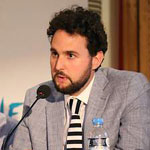A paradigm of alternate lending: caveats and opportunities

By Priyanka Pandit
In its latest announcement, the BRICS New Development Bank (NDB) has agreed to nearly double its lending from the first commitment of $811 million to $2.5 billion in 2017. In its first package of loans, the NDB had agreed to provide $300 million to Brazil, $250 million to India, $180 million to South Africa and $81 million to China to fund renewable energy projects in these countries. Established at the 7th BRICS summit in 2015, this multi-billion dollar bank is considered an alternative funding initiative to complement the existing international banking system. Current financing and investment patterns are inadequate in meeting the investment needs of developing economies. In this regard, the BRICS bank is expected to play a pivotal role in mitigating the challenges of funding faced by developing countries in the field of infrastructure and sustainable forms of development. Additionally, the new bank is significant since it signals an assertion of the global South vis-a-vis the North in the international economic order.
The BRICS countries especially, China and India have been quite vocal in advocating reforms of the international economic institutions like World Trade Organisation (WTO), International Monetary Fund (IMF) and World Bank which would make them more representative and fair to the needs of the developing countries. As per the lending policy of the IMF, loans are generally given on the implementation of certain economic policies by the borrowing countries. These conditions tend to involve i) reducing government borrowing- higher taxes and lower spending, ii) higher interest rates to stabilise the currency, iii) allow failing firms to go bankrupt, iv) structural adjustment like privatisation, deregulation, reducing corruption and bureaucracy. As a result, these policies of structural adjustment which are often imposed with little or no consultation with the affected countries worsen the situation leading to a greater economic chaos.
During the Asian crisis of 1997, many countries such as Indonesia, Malaysia and Thailand were required by IMF to pursue tight monetary policy (higher interest rates) and tight fiscal policy to reduce the budget deficit and strengthen exchange rates. However, these policies caused a minor slowdown to turn into a serious recession with mass unemployment. Similarly, in 2001, Argentina was forced into a similar policy of fiscal restraint. This led to a decline in investment in public services which arguably damaged the economy. IMF, however, claims in the recent years, that it has drawn lessons from the crises and streamlined the demand it attaches to a loan. Contrary to its claims, the report by the European Network on Debt and Development (Eurodad) reveals that conditions have become more intrusive on domestic policy, with an increase from an average of 14 in 2007 to almost 20 attached to each loan today.
The scope of sectorial and country-specific lending of the BRICS bank had been defined by the BRICS leaders in the 2013 Durban Summit Declaration. The NDB is set up as an alternative with the necessary savings and foreign exchange reserves of the BRICS countries. Its primary objective is to financially assist the developing countries in their infrastructure projects. The modalities of each loan would differ based on borrower’s preferences. Among the key features of the new bank include equal voting rights of the five founding members, and the ability of the non-BRICS countries (emerging and developing as well as developed ones) to contribute capital provided the BRICS countries always have a minimum of 55 per cent of the total capital share. These features implies an important shift in the international financial architecture with NDB as the new platform of BRICS to advance reforms that favour developing and emerging countries, in general.
Nevertheless, significant challenges remain. One of the strengths of the World Bank is its credit rating, and its sound financial position as well as the strength and diversity of its government shareholders. The World Bank’s strong credit ratings from international rating agencies, combined with its extremely sound financial management and liquidity position, gives it an excellent access to international capital markets for its programs[i]. In comparison, the NDB has a less favourable financial profile in the view of international capital markets, due to the smaller number of government shareholders and their lower sovereign credit ratings contrary to the major shareholders of the World Bank. Owing to the lack of regulatory and systematic financial analyses, NDB will not have an established track record to begin with, which will be less favourable in international financial markets, making the cost of borrowing higher. There are also issues related to governance and expansion of the bank’s membership which alongside lack of clear leadership of the NDB (with five equal founding shareholders) may hinder effective implementation. Additionally, presenting a viable domestic environment for investment, most of which are plagued by inefficient governance and the poor ability of repayment even with a concessional interest rate in smaller developing countries, will be a challenge for the NDB to avoid defaulters. Thus, it remains to be seen the extent to which the scale of lending by the BRICS bank will make meaningful impacts given the huge level of un-met needs indentified in the developing and emerging economies.
One of the impacts of financial crises has been sudden surges in liquidity. As a result of this abundance of financial assets, the emerging economies are often compelled to absorb increasing level of short term capital, making it vulnerable to volatile capital inflows and outflows. In this context, there has been considerable discontent with the main multilateral institutions such as the IMF and World Bank. The growing frustration of the developing countries including poor nations of Africa, for failing to get a greater voice in decision-making in the Bretton Woods institutions, has led to the creation of this alternate fund which would help them during times of capital flight. In the form of financial packages during the crisis, these established institutions have unfairly imposed inappropriate structural adjustment programmes on developing countries, which the developed countries themselves would refuse to implement in their own economies in return for funding.
In order to prevent such economic instability, the BRICS members set up a $100bn contingency reserves pool, called the Contingent Reserve Arrangement (CRA) denominated in US dollars, with China’s initial commitment of US$41 billion, Russia, Brazil and India US$18 billion each and South Africa US$5 billion. The primary objective behind its creation is to provide support to the BRICS members through liquidity and precautionary instruments in response to actual or potential short-term balance of payments pressures. This new contingency reserve fund is also seen as an alternative to the International Monetary Fund (IMF). Although the contingency reserve fund is based on the Chiang Mai Initiative, it is modest in size. A key feature of the arrangement, explained in Article 5 of the CRA treaty, is “30 percent of the maximum access for each Party, shall be available subject only to the agreement of the Providing Parties, which shall be granted whenever the Requesting Party meets the conditions stipulated in Article 14 of this Treaty”, whereas in the ‘IMF-linked portion’ the access to the remaining 70% would depend on a conditionality-based agreement with the IMF is concluded. Thus, while all parties will have access to the fund, there are limits to the amount of resources each participant is entitled to. This has led to criticism of the CRA, that IMF interference to it would lend the instrument ineffective to a greater extent[ii].
Thus, BRICS Development Bank and the contingency reserve fund largely represent the ongoing attempts of the developing countries to create an alternative monetary, finance system, free from the dictates of the western world. It is however, argued that these alternate initiatives, perceived as a form of insurance and assurance, is unlikely to replace the IMF and World Bank in the near future as the latter will still remain powerful players in the global economic system. Also, the creation of alternative associations by no means indicates that the BRICS members will necessarily quit the World Bank or the IMF. On the contrary, a BRICS bank is expected to be a valuable addition to the existing network of multilateral, regional and national development banks.
Priyanka Pandit is an Indian visiting fellow at the Chongyang Institute for Financial Studies, Renmin University, Beijing.
[i] Liu & Tang. (2009), “Subnational Credit Ratings: A Comparative Review”, 5013 Policy Research Working Paper, [Online Web] http://siteresources.worldbank.org/INTDSRE/Resources/389451-1250785355895/WPS5013.pdf Accseed on September 2, 2016
[ii] Eichengreen B, ‘Will the new BRICS institutions work?’, World Economic Forum, Agenda, 15 August 2014, [Online Web] https://agenda.weforum.org/2014/08/brics-newdevelopment- bank-contingent-reserve-agreement/, accessed 8 September 2015






